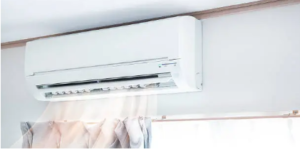As the demand for efficient climate control systems rises, reverse cycle ducted air conditioners have emerged as a popular alternative for homeowners seeking versatile heating and cooling solutions. However, the installation process of these sophisticated systems requires careful planning, precise execution, and professional expertise. In this article, we’ll explore the intricacies of reverse cycle ducted air conditioners installation, from initial preparation to final testing, to ensure optimal performance and comfort.
Understanding Reverse Cycle Ducted Air Conditioners:
 Because they can be used for both heating and cooling, reverse cycle ducted air conditioners are a flexible choice for preserving indoor comfort all year round. These systems consist of an indoor unit linked to a system of ducts that distributes conditioned air throughout the building and an outside unit housing the compressor and condenser. Reverse cycle ducted air conditioners effectively control inside temperature by removing heat from the outside air in the winter and doing the opposite in the summer.
Because they can be used for both heating and cooling, reverse cycle ducted air conditioners are a flexible choice for preserving indoor comfort all year round. These systems consist of an indoor unit linked to a system of ducts that distributes conditioned air throughout the building and an outside unit housing the compressor and condenser. Reverse cycle ducted air conditioners effectively control inside temperature by removing heat from the outside air in the winter and doing the opposite in the summer.
Pre-Installation Planning and Preparation:
Before embarking on the installation process, meticulous planning is essential to ensure the success of the project. It includes:
- They are assessing the layout and size of the property to determine the appropriate capacity and placement of the air conditioning units.
- I am evaluating the insulation levels and sealing any air leaks in the building envelope to optimize energy efficiency.
- Conducting a thorough site survey to identify potential obstacles and ensure adequate space for the outdoor reverse cycle ducted air conditioners.
- Consult with HVAC professionals to select the right equipment and design a customized ductwork layout tailored to the specific needs of the property.
Selecting the Right Equipment:
Choosing the correct reverse cycle ducted air conditioner is critical to achieving optimal performance and energy efficiency. Factors to consider include:
- Capacity: Determining the heating and cooling requirements based on the size and layout of the property.
- Energy Efficiency: Selecting units with high Energy Star ratings to minimize energy consumption.
- Zoning Capability: Opt for systems equipped with zoning features to enable precise temperature control in different areas of the property.
- Noise Levels: Choosing units with low noise output to ensure minimal disturbance to occupants.
Installation Process:
Outdoor Unit Installation:
- It is selecting an appropriate location for the outdoor unit that is away from direct sunlight, obstructions, and noise-sensitive areas.
- We are ensuring proper mounting of the outdoor unit on a stable surface using vibration-dampening mounts to minimize noise and vibration.
- We are installing a concrete slab or mounting brackets to support the unit and maintain adequate clearance for airflow and service access.
Indoor Unit Installation:
- We are positioning the indoor unit in a central location to facilitate the even distribution of conditioned air throughout the property.
- Installing the indoor unit in the ceiling cavity or under the floor, depending on the layout and design of the property.
Ductwork Installation:
- Designing a ductwork layout that optimizes airflow and minimizes pressure losses.
- Installing supply and return air ducts in each room to ensure balanced air distribution and proper ventilation.
- Sealing joints and connections in the ductwork to prevent air leaks and maintain system efficiency.
Electrical and Refrigeration Connections:
- Engaging qualified electricians and refrigeration technicians to complete the electrical and refrigeration connections.
- Wiring the outdoor and indoor units to the main electrical panel and connecting the refrigerant lines to facilitate the exchange of heat between the indoor and outdoor units.
Post-Installation Testing and Commissioning:
Once the installation is complete, thorough testing and commissioning are essential to verify the system’s performance and functionality.
Reverse cycle ducted air conditioners offer homeowners a convenient and efficient solution for maintaining indoor comfort throughout the year. By following the proper reverse cycle ducted air conditioners installation procedures outlined in this article, HVAC professionals can ensure the successful deployment of these systems, providing homeowners with reliable heating and cooling solutions for years to come.